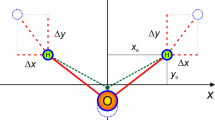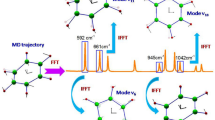Abstract
OUR ideas and knowledge of the shapes of polyatomic molecules are largely confined to the ground electronic states. Comparatively little progress has been made in knowledge of the symmetries of electronically excited states. Not infrequently it has been tacitly, but unjustifiably, assumed that the excited state of a molecule has the same symmetry as the ground-state. Bound up with this, spectroscopists, having made a vibrational analysis of a spectrum, have often been content to leave it at that; they have not tried to answer the question as to why particular vibrations occur. There have been exceptions, of course—the occurrence of the breathing vibration of benzene on electronic excitation near 2600 A. has been, for example, very reasonably attributed to an expansion of the benzene ring in the upper state—but, especially with non-totally symmetrical vibrations, it is usually true that no explanation has been offered for the occurrence of particular modes of vibration. Why, for example, do eg+ vibrations occur in the near ultra-violet spectrum of benzene? That these enable an otherwise forbidden transition to become allowed is, of course, no explanation of why they occur.
This is a preview of subscription content, access via your institution
Access options
Subscribe to this journal
Receive 51 print issues and online access
$199.00 per year
only $3.90 per issue
Buy this article
- Purchase on Springer Link
- Instant access to full article PDF
Prices may be subject to local taxes which are calculated during checkout
Similar content being viewed by others
References
See Ang. Chem., 63, 439 (1951).
Author information
Authors and Affiliations
Rights and permissions
About this article
Cite this article
WALSH, A. Electronic Orbitals, Shapes and Spectra of Polyatomic Molecules. Nature 170, 974–975 (1952). https://doi.org/10.1038/170974a0
Issue Date:
DOI: https://doi.org/10.1038/170974a0
Comments
By submitting a comment you agree to abide by our Terms and Community Guidelines. If you find something abusive or that does not comply with our terms or guidelines please flag it as inappropriate.



